Adventuring with Animals
Author: Elyss Koh'inor
These are brief sketches of seven animals from the seven continents. I hope you enjoy reading about these amazing animals!
Banter with a Bat-Eared Fox
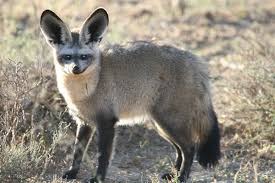
The Bat-Eared Fox, or Otocyon megalotis, is part of the canine family and lives on the African savannah. Specifically, they can be found from southern Zambia and Angola down into South African and east as far as Mozambique and Zimbabwe, as well as from southern Sudan and Ethiopia down to Tanzania.
This animal uses its large ears to find a variety of insects which make up the majority of its diet. In fact, eighty percent of the Bat-Eared Fox’s diet is termites. Using its oversized ears, the Bat-Eared Fox can actually hear the movement of termites underground. The Bat-Eared Fox also eats other insects, small rodents, eggs and chicks of birds, lizards, and even plants. The body fluid of the insects they eat provide Bat-Eared Foxes with water.
Eighteen to twenty-six inches (46-66 centimeters) long, and seven to twelve pounds (3-5.5 kilograms), the Bat-Eared Fox is fairly small. It has yellow fur, except for darker fur on its ears, face, and feet.
This animal is nocturnal, and usually forms small family groups of two foxes and their pups. The pair of Bat-Eared Foxes normally mate for life. The various members of the family groom each other, play together, and sleep together. The males take care of and guard the pups just as much as or more than the females do.
Shivering with Snow Petrels
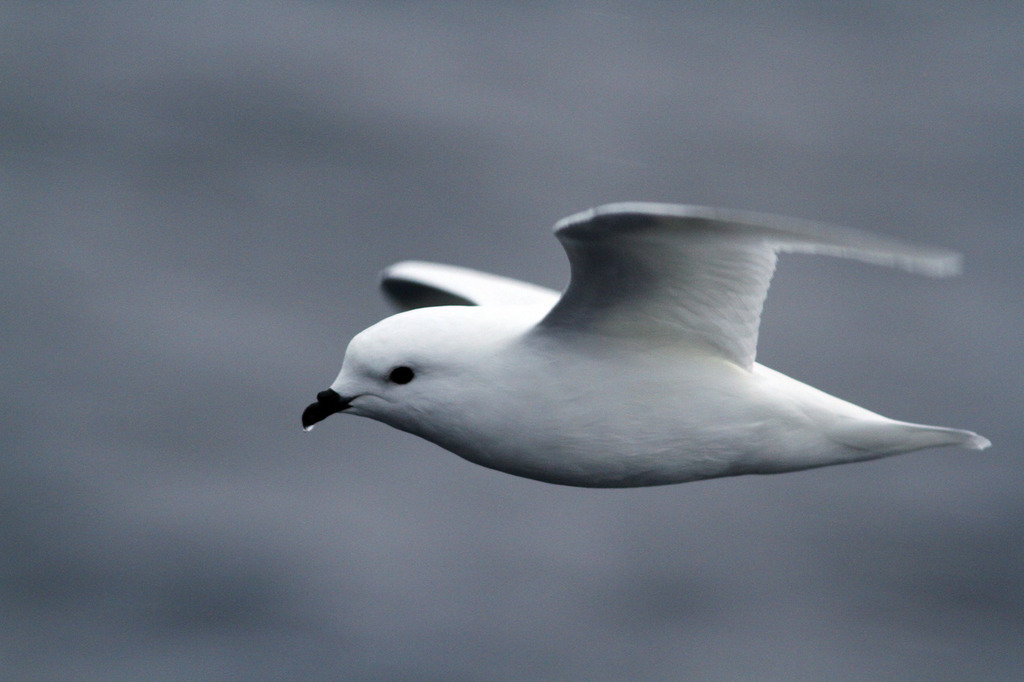
Snow Petrels are large white birds found in Antarctica. Pagodroma nivea can be seen resting on pack ice and flying over the icy water of the Antarctic. Their feathers are all white, though they have a black bill and eyes, and bluish gray feet.
Nests for Snow Petrels are often shallow scrapes in the ground lined with pebbles under shelter of a rocky overhang. The birds form a colony of nests in one area. One egg is produced between late November and early December, and it must be incubated until January or early February. Chicks don’t leave the nest until late February to mid-May.
The diet of the Snow Petrel varies depending on whether they eat at sea or on land. While at sea they eat mainly fish, squid, mollusks, and seal, whale, or penguin carcasses. They are also scavengers on land, eating carcasses and even refuse.
Snow Petrels fly low over water, but high over land. This helps them to avoid their main predator, the South Polar Skua, another large bird. However, Snow Petrels’ main threat is severe weather conditions.
Gallivanting with Galapagos Penguins
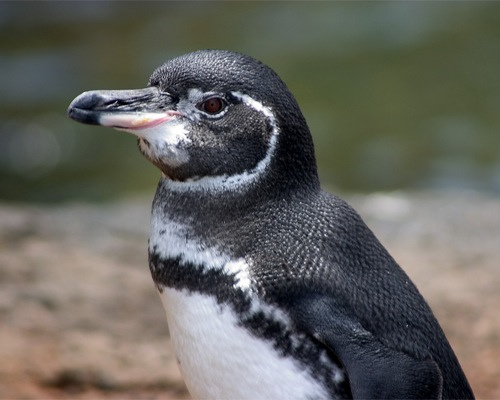
Spheniscus mendiculus, the Galapagos Penguin, only reaches about five pounds (2.3 kg) when fully grown. This warm-weather flightless bird is always less than twenty inches tall (51 cm), making it one of the smaller types of penguin. Galapagos Penguins have distinctive markings. With a black head and back, they have a strip of white feathers that frame their head and go from eye to neck. The feathers between the black on their back and the white on their bellies are blended together as well, almost making it seem as if they have another strip of white among the black. Feathers on the belly are not purely white; black dots in various patterns are scattered along the stomach.
As the name might suggest, these penguins live in the Galapagos Islands. Two main colonies of the birds exist on the Fernandina and Isabela Islands. While the temperatures are warm, currents keep the water cold. These cold water currents allow Galapagos Penguins to be the only species of penguin known to reside so close to the equator. The nights are cool, but hot sun can present a problem to the penguins if they are not careful. The same currents that allow these penguins to live so close to the equator bring small fish and crustaceans close to the shore. As a result, Galapagos Penguins rarely go out in search of food.
Galapagos Penguins live in burrows on land. They spend the night in these burrows, coming outside to socialize with others in the colony, eat, play in the water, and take care of their young. During the daytime, scientists have observed Galapagos Penguins walking with their flippers over their feet. This seems to protect their sensitive feet from the sun’s rays.
If there is trouble with the Galapagos Penguins’ habitat or food supply they will not reproduce. Eggs are incubated for around forty days, and the chick is fed by the parents for another sixty-five days after hatching. The chick becomes independent after three to six months. In the 1980s, an El Nino disrupted the currents the Galapagos Penguins rely upon to live. This caused a sharp decrease in population. Now there are fewer than 1,600 Galapagos Penguins remaining.
Bickering with Bison
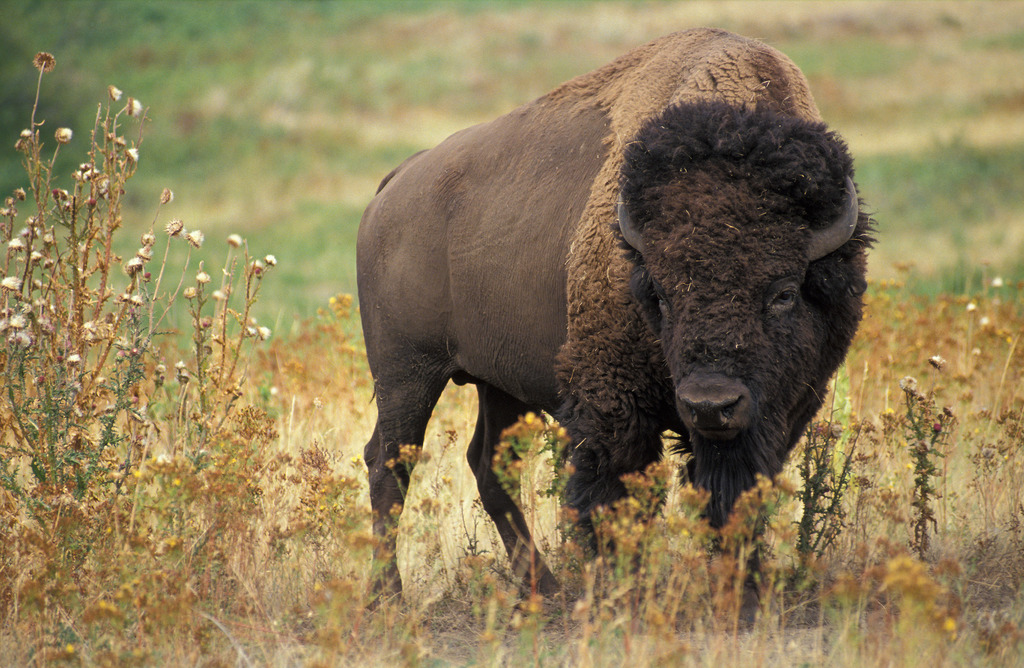
There were once two types of bison, European and American Bison. Today, only the American Bison, Bison bison, remains. In the late nineteenth century, habitat restriction and overhunting reduced their numbers to a little over a thousand. Today there are around five hundred thousand American Bison living. Most of these remaining have been cross-bred with domesticated cattle, so very few wild Bison remain. In the wild they may be hunted by wolves, though they ignore wolf packs that don’t display hunting behavior.
These large animals eat grasses and sedges, roaming the Great Plains in herds. They drink a lot of water and even consume snow. Females, or cows, lead the herds, and males are often solitary or in small herds during most of the year. Their thick fur provides protection from the heat of summer and snowy winters. They are six and a half to eleven and a half feet (2-3.5 m) long, and sixty to seventy inches (150-186 cm) tall at the shoulder. They come in a range of weights, from seven hundred to over two thousand pounds (318-907+ kg). Most bison live for around fifteen years in the wild, and up to twenty-five years in captivity.
Bison have a social hierarchy within the herd for both males and females. This is usually dependent on how early in the breeding season the calf was born. Earlier calves are usually stronger and larger. Cows nurse calves for seven to eight months, and they seem to be weaned by the first year. Male bison do not take part in raising calves.
Especially during the high levels of insects in the fall, bison may go into forested areas to scrape their horns against aromatic trees. Cedar and pine seem to be the preferred species to use as a natural insect repellent. This practice is called horning. Bison also like to wallow in wet or dry soil depressions. Scientists are not clear on the purpose, but it is possibly a social behavior, grooming, or a way to soothe insect bites.
Frolics with a Fire Salamander
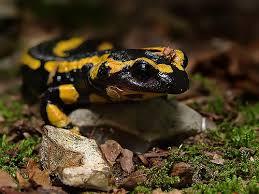
The Fire Salamander can be predominantly black or yellow depending on the species, and some even have bits of red or orange as well. Salamandra salamandra lives mostly in the hilly deciduous forests of central Europe. Their habitat must also have a clean water supply, usually a brook or stream, for the larvae. Fire Salamanders usually stay hidden, coming out only in the evenings or at night, possibly during rainy days. They like to use fallen leaves and mossy tree trunks to stay hidden.
A Fire Salamander will eat insects, spiders, worms, slugs, newts, and even young frogs in the wild. When in captivity, they will often eat crickets, mealworms, waxworms, and silkworm larvae. This type of salamander can grow from a little over five inches to almost ten inches long (15-25 cm), and can live for quite a long time, especially in captivity. One Fire Salamander in a German natural history museum grew to be fifty years old!
Toxic skin secretions protect the Fire Salamander from predators. This toxin can cause muscle spasms and hyperventilation in vertebrates. The colored portions of the salamander’s skin usually coincide with toxin glands, which are normally found near the head and back. Other secretions protect the salamander’s skin from bacterial and fungal infections, though they can be harmful to humans.
Questioning a Quokka
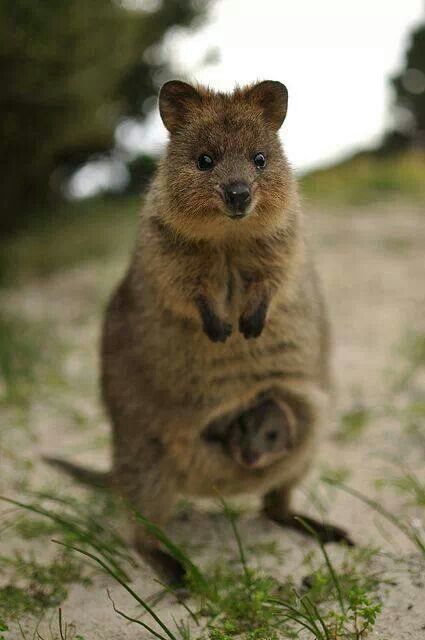
Everyone on the internet has probably seen this cute little animal at some point. The Quokka, Setonix brachyurus, has short brownish-gray fur, round ears, and a black nose. It is a marsupial found on the island of Rottnest, near Perth, Australia. The island was actually named for the Quokkas, who were mistakenly identified as rats by the Dutch explorer who saw them (“Rattennest” = Rottnest). Other populations of Quokkas can be found on the mainland of Western Australia.
Groups of Quokkas live in territories led by dominant males. They live in tall grasses near water sources, feeding primarily at night. Quokkas eat grasses, leaves, stems, and bark. They store fat in their tails and can live off this for a while if they lose access to food and water. An adult Quokka weighs in at nearly seven pounds (3.2 kg) and they are usually sixteen to twenty-one inches (40-54 cm) long.
Quokkas are marsupials, and newborns are called joeys. These joeys stay in the mother’s pouch for around six months. Once it leaves the pouch, the joey still relies on its mother’s milk for another two months.
Due to population decrease and habitat loss from logging and development, the Quokka is listed as a vulnerable species. On the mainland, foxes, dogs, and cats can kill Quokkas, though the only predators on Rottnest Island are humans.
Staring at a Star Tortoise
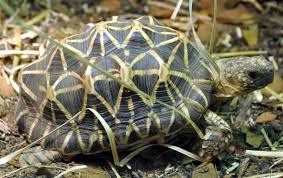
The Indian Star Tortoise lives in India and Sri Lanka, ranging west into Pakistan as well. Geochelone elegans has an extremely curved shell that is often bumpy. It is popular in the exotic pet trade, probably because of the beautiful patterns on its shell. This same pattern acts as camouflage in the grasses and dry areas of the Star Tortoise’s habitat. They eat grass, fallen fruit, and sometimes even carrion.
Females are larger than males, though the average size for an Indian Star Tortoise is ten inches (25 cm) long. During the monsoon rains, a female will lay around seven eggs, abandoning them to grow into adulthood. Unlike the turtles we often see in cartoons, the shape of the Indian Star Tortoise’s shell allows it to turn itself back upright if it is turned onto its back. Even with this defensive shell, Indian Star Tortoises are hunted by birds of prey, snakes, and reptiles.
Trading these tortoises is actually illegal, and this is where many specimens come from. There hasn’t been an accurate count of wild Indian Star Tortoises, so it is difficult to tell how the illegal wildlife trade is affecting the population.
